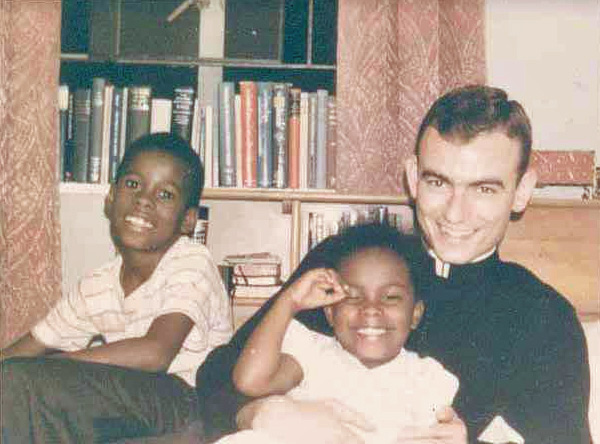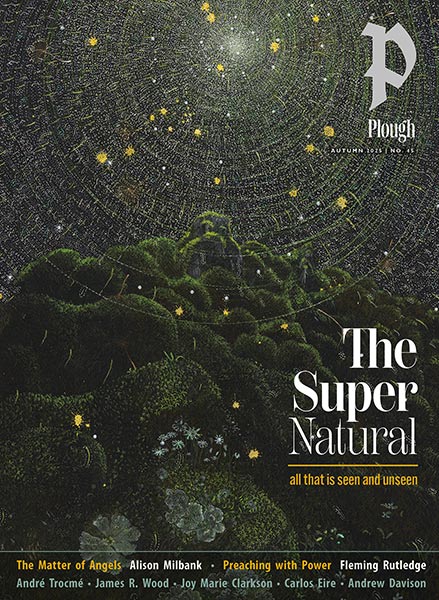Subtotal: $
Checkout
In one horrible moment it was over: a young man, who had his whole life in front of him, was suddenly and brutally taken from this earth. Taken from his mother and sister, from his friends, and from those he struggled with during the height of the civil rights movement. In the moment of violence that ended his life, however, Jonathan Daniels demonstrated what love was all about. Not pulp magazine love or reality show infatuations, but real love: the love for humanity that bids a person to lay down his or her life for another. Jesus spoke of this love over and over again. Jonathan Daniels was clearly listening.
Born in 1939 in Keene, New Hampshire, Jonathan had deep roots in New England. He was a typical kid: going to music camp, attending church, falling in love, and enjoying the company of a steadfast group of friends who still remember him with laughter and fondness. He was not a perfect child by any means. He smoked, stayed out too late, and snuck a beer now and then.

Image courtesy of Jonathan Daniels Collection, Mason Library, Keene State College.
But Jonathan showed a contemplative side as well. His reading list included Camus, Kierkegaard, and the Church Fathers, and in an article for his high school paper he lamented young people’s disconnect with the spiritual world. His favorite book, The Chain, portrays an Episcopal priest who stands with the marginalized in his town and loses his life in the process. After high school Jonathan attended the Virginia Military Institute in Lexington, where he thrived under the rigorous academic and physical discipline
Graduation found Jonathan at a crossroads. Although he wished his classmates “the joy of a purposeful life” in his valedictory address, his own life lacked such purpose. His father had died two years before, and there was pressure on him to return home to support his mother and sister. He decided, however, to pursue a graduate degree in English at Harvard University. After a year of study he realized that Harvard was not for him; Harvard had also decided that he needed to seek his degree elsewhere.
And then he had an epiphany. He never shared what he experienced during the 1962 Easter Sunday services at the Church of the Advent on Beacon Hill, but it changed his life forever. He later called it a “reconversion”; after an on-again off-again relationship with the church, he had come home. Within a year he was enrolled in seminary at the Episcopal Theological School in Cambridge, Massachusetts.
Jon’s textbook margins were well marked with his thoughts and reactions, but he learned his most important lessons from fieldwork in inner-city Providence, Rhode Island, where his eyes were opened to the realities of poverty and injustice.
At the same time the change happening in the world around him caught his attention. In March 1965, Dr. Martin Luther King Jr. called on American clergy for assistance after the brutal attack on activists at the Edmund Pettus Bridge in Selma. At first Jonathan was not sure – “Could I spare the time? Did I want to spare the time? Did He want …?” – but after evening chapel he resolved to go south. He joined the march to Montgomery and then, after most of the activists had returned home and the camera crews had packed up, he stayed.
While managing to complete his seminary coursework, he plunged into what he called “living theology”: he helped with voter registration, photographed segregated conditions, worked to integrate a church, and lived with local families. Rachel West Nelson, whose family Jonathan stayed with, remembered that “he was part of our family. … In a way, he was a part of every black family in Selma in those days.”
He also encountered less than friendly locals. On one occasion, he was accused of being an “outside agitator” and asked if he was a “white nigger.” He replied that he was.
On August 14, 1965, Jonathan was part of a protest in Fort Deposit, Alabama. He, Stokely Carmichael, and some twenty others were arrested and held in the Hayneville county jail, where they sat for a week in the sweltering heat. On August 20 they were released and quickly set about trying to get to somewhere safe. While some of the activists organized rides, Jonathan and a Catholic priest named Richard Morrisroe along with two local women, Ruby Sales and Joyce Bailey, walked to a local store known to serve blacks and whites.
As Ruby opened the door, a figure from the shadows warned them off the property. Then the man raised a shot gun and pulled the trigger. Jonathan pulled Ruby from the line of fire and was hit instead. He was dead before he hit the ground. The gunman shot Father Morrisroe in the back, and then walked over to the county courthouse to call the state police chief and inform him he had just shot two preachers.
At Jonathan’s funeral, many of the mourners stood around the grave and sang the anthem of the movement, “We Shall Overcome” – a final tribute from those who had come to love this son of New England and his integrity, love, and commitment to freedom.
Even though Dr. King described Jonathan’s last act as “one of the most heroic Christian deeds I have heard of in my entire ministry and career for civil rights,” his story is seldom told. I have often wondered why he does not have the place he deserves beside Emmett Till, Jimmie Lee Jackson, Medgar Evers, Viola Liuzzo, and so many others. For a long time it made me angry. But recently I have begun to look at it in a different way …
The Gospel of Luke recounts that three days after Jesus’ burial some of the women who had been with him went to his tomb. They found the tomb empty, and standing nearby two men who asked them why they looked for the living among the dead.
In a similar manner I began to wonder why I had been looking for the living in the pages of books. Jonathan Daniels cannot be found there; he is still with us in many ways.
He is alive in the stories his friends tell and the memories they cherish.
He is still present in the places he walked and lived.
He is still with us whenever people tell his story.
He is still part of the lives he touched and in the life that he graciously saved.
Wherever a person stands up with love and compassion and takes a stand against violence and hatred, Jonathan Daniels is still alive.
Further Reading:
Schneider, William J. American Martyr: The Jon Daniels Story. Harrisburg, PA: Morehouse Publishing, 1992.
Eagles, Charles W. Outside Agitator: Jon Daniels and the Civil Rights Movement in Alabama. Tuscaloosa, AL: University of Alabama Press, 2000.
Branch, Taylor. At Canaan's Edge: America in the King Years, 1965-1968. New York: Simon and Schuster, 2006.
Historian and author Mike Bell has presented the life story of Jonathan Daniels to audiences across the country. He resides in New England, where he teaches, writes, and spends most of his time being a dad to his son, who is named for Jonathan Daniels.
Already a subscriber? Sign in
Try 3 months of unlimited access. Start your FREE TRIAL today. Cancel anytime.






John Szczepanski
Peace be with you and your family. Thank you for reminding us of +Jonathan Daniels. His friend, then Fr. Richard Morrisroe is alive and living in East Chicago, IN. Thanks be to God.
Nancy Kahaian
Thanks for sharing this story.
Greg Coates
Who wrote “The Chain,” his favorite book?
Elizabeth Samuels
Thank you for publishing this moving article. I didn’t know his name.